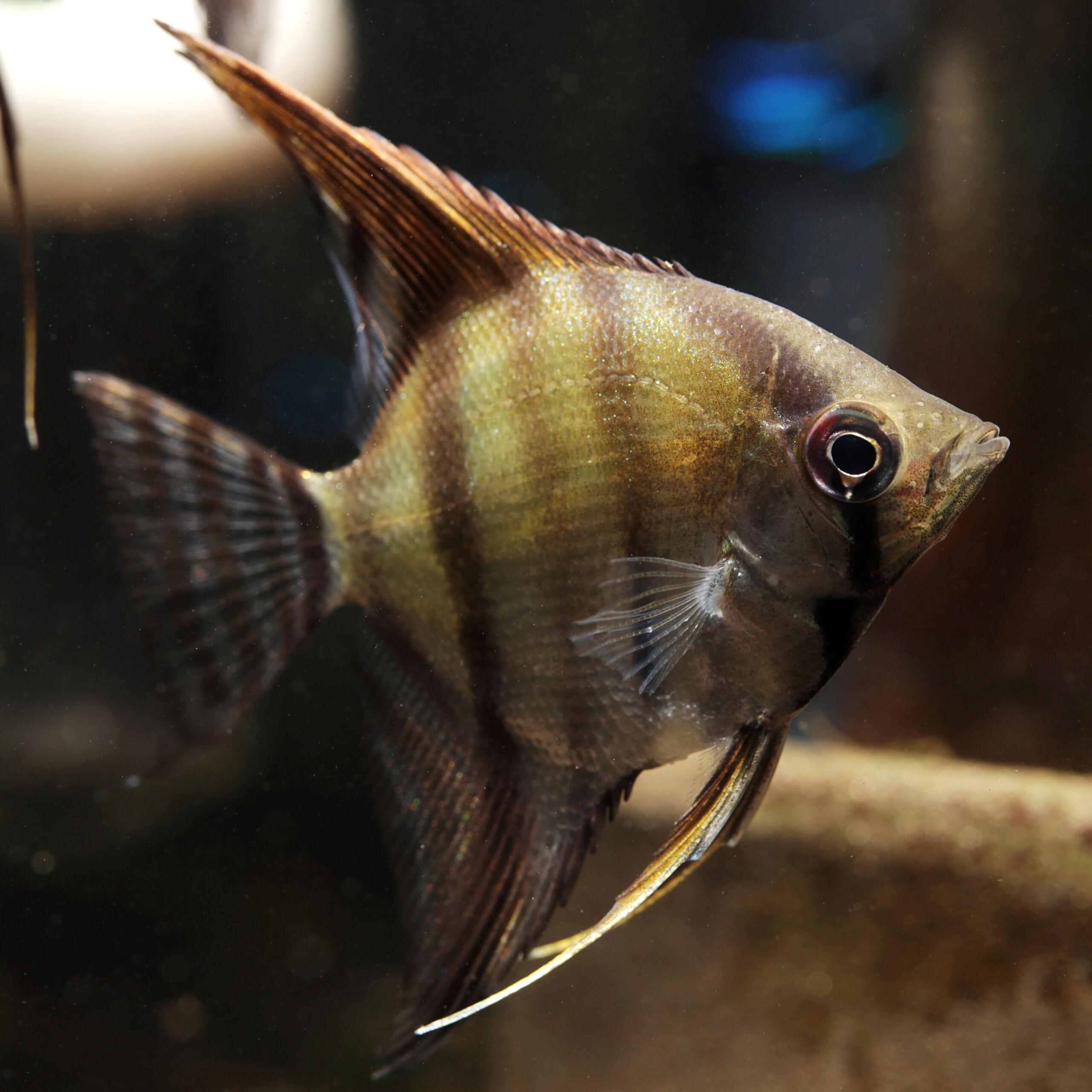Freshwater Angelfish
Pterophyllum scalare
The Angelfish is a beautiful, tall freshwater fish that originally comes from the Amazon region.
- beautiful fish from South America
- long extended fins
- for aquariums from 50cm height
1 in stock
 Delivery in a few working days
Delivery in a few working days
 Free shipping from €60 across Austria
Free shipping from €60 across Austria





Important data
Product description & details
The Angelfish, Pterophyllum scalare, is a freshwater fish from tropical South America that is up to 15cm long and can be found in the rivers of the Amazon, such as the Rio Negro, the Rio Ucayali or the Rio Xingu, where it lives in groups with its conspecifics. Its natural habitat are slow-flowing, often densely vegetated sections of water, which can contain clear water, black water or white water. In terms of color, the natural form of this pretty fish is characterized by a silvery to slightly golden body color with vertical, dark brown stripes on the body and fins. The most striking feature of the Angelfish, however, is its body structure. It has a body that is very flattened at the sides and can reach a total height of up to 25cm with its clearly curved back and belly as well as the elongated dorsal, ventral and anal fins.
Care in the aquarium
Due to its requirements, the Angelfish can be classified as medium difficult to keep. As a group fish, it wants to be kept together with at least 5 members of its species, but needs a well-structured tank in which it can mark its territory and have enough opportunities to retreat, as it vehemently defends its territory, especially during the mating season. A dense border planting with tall, robust plants such as Vallisneria or Echinodorus as well as large roots are ideal for this. However, care should be taken to ensure that the Angelfish has enough free swimming space. An aquarium with an edge length of 100cm and a height of 50cm is the absolute minimum for a couple due to its size (and especially height). However, we recommend keeping them in aquariums with a height of at least 60cm. Also, if a group is to be kept, we recommend an aquarium with a capacity of at least 300 liters. The water should be soft to medium hard and have a temperature between 24 and 30°C. Adding humic substances through leaves, peat or alder suppositories is ideal and promotes the health of the fish. This generally peaceful fish can easily be kept together with slightly larger fish, provided there is a sufficiently large aquarium. However, small fish species such as neon fish can quickly be viewed as live food and are therefore not recommended.
Feeding
In nature, the Angelfish feeds primarily on insects and their larvae, crustaceans, molluscs and small fish. This primarily carnivorous (meat-eating) fish is particularly happy in the aquarium with live and frozen food types such as artemia, enchytraea or mosquito larvae, but protein-containing fish food is also readily accepted.
Sexual characteristics and breeding
A reliable sex determination is only possible during the spawning season, as the sexual characteristics outside of this are only very weakly developed. The genital papilla, which is only visible a few days before the eggs are laid, is slightly more elongated and more pointed in males than in females. Other, very subtle, identifying characteristics of male Angelfish can be the slightly more domed forehead and the slightly larger maximum size. Breeding Angelfish in an aquarium is possible, but only works in very soft and, above all, clean water that is low in germs. Harmonizing Angelfish form pairs and share the tasks of caring for their offspring. Typically for open-breeding substrate spawners, the small, approximately 200-300 eggs are spawned on surfaces such as plant leaves, roots or other furnishings and then defended by the parents from potential predators. The young animals hatch after about 2 days and are then devotedly cared for and guarded by their parents for about 7 weeks. The fish larvae should only be fed after the yolk sac has been consumed (after about 5 days) and can initially consume small foods such as infusoria. A little later they can also be fed with newly hatched Artemia nauplii and Daphnia.





